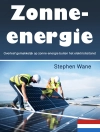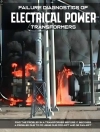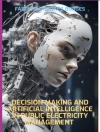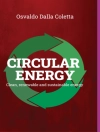This book presents the fundamental and applied properties of different phosphor materials that exhibit the phenomenon of persistent luminescence (Per Lum). Per Lum offers a solution for the limitations of existing fluorescent probes, with new lanthanide-based materials for in vivo bio-imaging and demonstrates the practical applications of these materials. The book offers a basic understanding of Per Lum, different mechanisms, models, related spectroscopic techniques, and a few applications essential for anyone interested in learning about Per Lum materials. This is partly due to the fact that the property of long-lasting luminescence is closely associated with other properties and functionalities, which besides being essential for many technological applications, such as bioimaging and biosensing, involve in-depth physics and chemistry. Although the concept of luminescence has been explored for many decades, the different types of luminescence have always led to versatile breakthroughs in different fields of science and technology. Among the same is one more well-established phenomenon known as ‘Per Lum, ‘ which is characterized by the maintenance of luminescence for periods ranging from minutes to hours in the absence of an external excitation source. Because of their remarkable properties, an enormous number of Per Lum materials have been developed and are now widely used in a variety of fields, particularly bioimaging, biosensing, therapeutics, etc.
Содержание
1. An Insight into The Persistent Luminescence.- 2. Persistent Luminescence in Comparison to Phosphorescence.- 3. Theoretical Aspects of Persistent Luminescence.- 4. Different Persistent Luminescent Materials (PLMs) and Suitable Adoptions for Improving the Efficiency.- 5. Near-Infrared Persistent Luminescence.
Об авторе
Dr. Vijay Kumar is working as an assistant professor of Physics at the National Institute of Technology (NIT) in Srinagar (J&K). Before joining NIT Srinagar, he worked as an assistant professor at Chandigarh University, Mohali. He was a postdoctoral researcher at the Phosphor Research Group, University of the Free State, South Africa. He holds a Ph.D. in Physics from SLIET Longowal and an M.Sc. in Physics from the National Institute of Technology Jalandhar, Punjab, India. His research experience and interests lie in the synthesis, processing, and characterization of functional materials, solid-state luminescent materials, bio-based/biodegradable polymers, and composites, drug delivery devices, wastewater treatment, polymer nanocomposites, and ion–solid interaction.
Irfan Ayoub is a senior research fellow in the Department of Physics, National Institute of Technology Srinagar. He is pursuing his Ph.D. in luminescent and optical properties of metal oxides.
Prof. Yogendra Kumar Mishra is a professor MSO at Mads Clausen Institute, University of Southern Denmark (SDU), Sønderborg, Denmark. Prior to joining SDU, he was leading a scientifically independent group at Functional Nanomaterials Chair, Institute for Material Science, Kiel University, Kiel Germany. He completed his habilitation (Dr. habil.) in Materials Science from Kiel University in 2015 and Ph. D. in Physics in 2008 from Inter University Accelerator Centre/Jawaharlal Nehru University, New Delhi, India. His main research focus is ‘Smart Materials’.
Prof. Hendrik C Swart is an Internationally acclaimed researcher and currently a senior professor in the Department of Physics at the University of the Free State, South Africa. He brought luminescence materials to South Africa in the beginning of 1996 after a highly productive sabbatical spent in the lab of Paul Holloway, Florida University, Gainesville. The main focus of his research group is the improvement of luminescent materials for applications in flat panel displays, solar cells, solid-state lighting, dosimetry, and thermometry.












